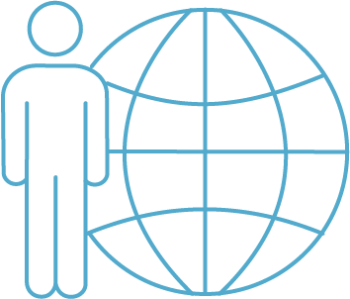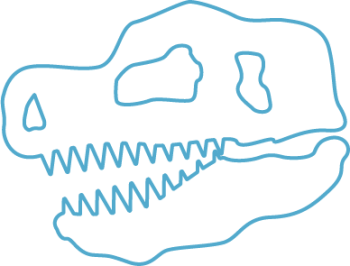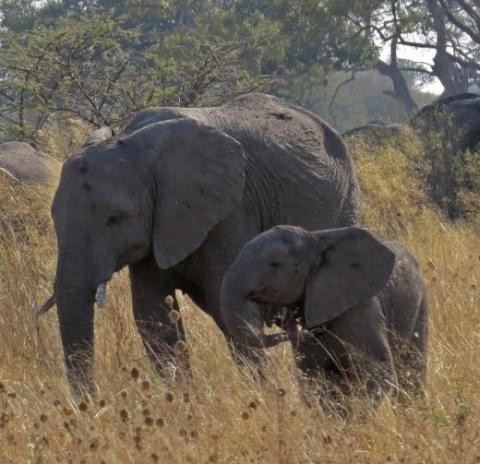Larvaceans are tunicates that play a major role in the deepsea ecosystem. These animals build complex mucus nets that they live inside. The nets filter tiny bits of detritus and animal parts—called marine snow—that drift down to the bottom of the ocean. A larvacean mucus net is a very efficient filter. They frequently cast off their old nets when they become clogged and build new ones. Scientists from the Monterey Bay Aquarium Research Institute estimated the amount of food and its carbon content brought to the sea floor by the abandoned larvacean nets. It was a good amount and provided the answer to a puzzle: taking marine snow samples from the ocean didn’t add up to enough to feed life on the bottom.
Salps, a gelatinous tunicate, play a major role in the ecosystem of the deep sea. One of the reasons is the sheer number of them. Read more in an article from Woods Hole Oceanographic Institution: Jellyfish-Like Creatures May Play Major Role in Fate of Carbon Dioxide in the Ocean. And they are very efficient filter feeders.
Reptiles are important components of ecosystems. Some are top predators: the ones with a big head, long teeth, and powerful jaws. Other types are herbivorous. Read about how reptiles play an important role in ecosystems as important components of the food web.
Snakes play an important role in food webs. They are mid-level predators that feed on many small animals – rodents, birds and insects. And they are prey to larger predators that are higher in the food web. Without snakes the number of their prey species would increase and their predators would have less food.
Amphibians are very sensitive to their environment. They often show the first signs of distress or decline if an ecosystem is in trouble. They are what ecologists call “indicator species.” This abstract is about how amphibians contribute to ecosystem services.
Scientists estimate that there may be as many as 20,000 species of fish in the ocean (they’re still counting). On coral reefs there are thousands of species. As well as their role in the food web, many of these fish serve other important ecosystem services. For example, herbivores like surgeonfish and parrotfish keep seaweed, like algae, from taking over coral reefs. Cleaning wrasse help keep larger fish healthy by removing parasites and dead skin – sometimes from inside the larger fish’s mouth! In addition to their ecological value in the oceans, more than one billion people around the world rely on reef fish as a source of food and income. Reef fish poop provides nutrients to coral reef and sea grass habitats. Here is an article from the University of Georgia: "Fish have enormous nutrient impacts on marine ecosystems".
Salmon spend part of their lives in freshwater, part in the ocean. When they return from the ocean and spawn and die in their home streams, they bring ocean nutrients to the forest feeding trees and forest animals. Watch this video from the BBC: "How salmon help keep a huge rainforest thriving".
Birds play many roles in ecosystems as predators and prey. They are pollinators, seed dispersers, scavengers, and they control insect populations. Read more here: Ecological roles of birds and Birds’ role in ecosystems. Unfortunately, bird populations have been on the decline due to human activities.
Mammals play diverse functional roles in ecosystems since there are over six thousand species. They provide essential services such as seed dispersal, pollination, regulating insect populations, reducing disease transmission, and some act as indicators of general ecosystem health.
Rodents are mayor prey items for other mammals and birds, making them an important link between plants and larger mammals. They eat insects and disperse seeds by eating and pooping, playing a vital role in an ecosystem.
Whale populations are recovering and, as they do, scientists are discovering the role they play in ecosystems. From the University of Vermont: "Whales as Ecosystem Engineers". When a whale dies and its carcass sinks to the bottom, it becomes a source of food where food is generally scarce. From the Monterey Bay Aquarium Research Institute: "Whale falls—islands of abundance and diversity in the deep sea."
The actions of a predator (sea otters) can affect the diversity of a producer (eel grass).
When sea otters dig for prey in eel grass beds, they stimulate the grasses to reproduce. This creates more genetic diversity and thus a healthier eel grass population.
Top predators regulate the populations of herbivores, preventing them from over grazing habitats. Here is an article about the reintroduction of wolves to Yellowstone National Park. Here is an article about why top predators matter.






















